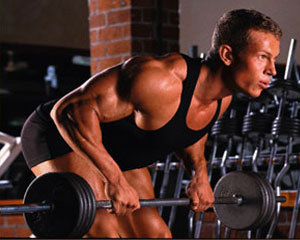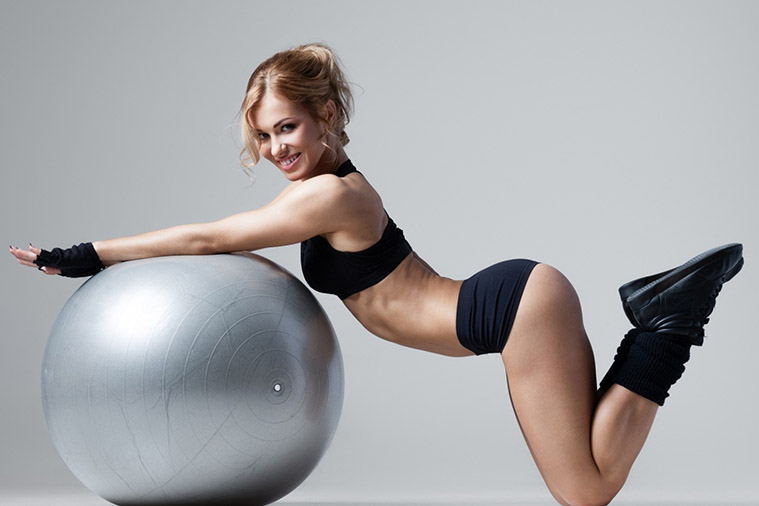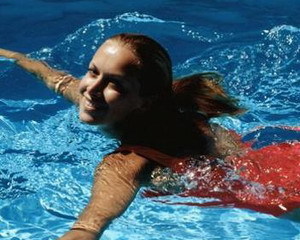Abdominal – work on the bugs
 Being engaged in the gym, abdominal exercises are traditionally postponed “for later”. At the end of the training, the forces, as a rule, do not remain and the press is postponed “for tomorrow”. So, a beautiful picture of life risks being seriously tarnished by the deplorable state of the muscles of your abdomen. Irregular work on the abdominals – half the problem, the wrong technique and the composition of the exercises – this is a real scourge not only for your appearance, but also for your health. And so that this does not happen, we invite you to familiarize yourself with the basic principles of work on the abdominals.
Being engaged in the gym, abdominal exercises are traditionally postponed “for later”. At the end of the training, the forces, as a rule, do not remain and the press is postponed “for tomorrow”. So, a beautiful picture of life risks being seriously tarnished by the deplorable state of the muscles of your abdomen. Irregular work on the abdominals – half the problem, the wrong technique and the composition of the exercises – this is a real scourge not only for your appearance, but also for your health. And so that this does not happen, we invite you to familiarize yourself with the basic principles of work on the abdominals.
Lifting the legs lying down, lifting the body lying down, lifting the legs in the legs and other similar exercises are considered essential for the press. However, these exercises can damage even a healthy back, not to mention injured in the past.
The problems associated with these exercises arise from the inconsistency between spinal flexion and pelvic flexion. Spinal flexion is the flexure of the spine, which is caused by the contraction of the rectus and oblique muscles. They attach the sternum and ribs to the pubic and iliac bones. The tension of these muscles prevents the lower back from bending too much, reducing the internal curvature of the lumbar spine.
Pelvic flexion is another matter. It occurs when the torso or lower half of the body is bent in the pelvic region and when the knees are tightened to the chest. This happens when the legs are raised, the legs are raised in the neck and the usual options for lifting the body. During these movements, the abdominal muscles are reduced passively, although the overall impression is created that the main burden falls on them. But actually hip flexors work in these exercises.
The hip flexors are the iliopsoas muscles (they are located inside the body and are not visible from the outside) and the rectus muscles of the thigh, which are part of the quadriceps. Over development of hip flexors can lead to excessive bending of the lumbar spine and back pain. In some sports (for example, in gymnastics), athletes are forced to develop these muscles, and then they have to pay for it with back pain.
Rules of work on the abdominal muscles
Not only that most of the traditional abdominal exercises do not develop the abdominal muscles sufficiently, in addition, these exercises also have a bad effect on the back. Yes, they cause pain in the abdominal area. However, the pain and “burning” that you feel are the result of fatigue of the hip flexors and fatigue of the abdominal muscles, which passively contract while hip flexors are active. This combined effect and creates a false impression that the abdominal muscles are working at the limit.
If you want to really train your abdominals, choose exercises that do not put pressure on your hip flexors, but on your dorsal flexors. This means that preference should be given to those exercises where the pelvis is fixed, for example, “twisting”.
Well-developed abdominal muscles create a natural strength belt that protects your spine. Press must be trained seriously and stubbornly. But it must be remembered that if you perform the corresponding exercises right in front of the bail or squats, this will reduce the stability of the middle part of the body, which is necessary for basic exercises. Hence the rule: before the basic exercises, the press is better not to “pump”.
Press exercises
Body bends
Twisting the torso — for example, sitting “on horseback” on a bench with a barbell on your shoulders — will not help you lose weight in the waist area. They force the connective tissue covering the intervertebral discs to work “at break”. The spine is not very well adapted to twisting movements – it works much better for bending and stretching, as happens with exercises such as deadlifts. No matter how much you “spin” with a barbell, you will not lose an inch or so, but you have every chance to earn a lower back injury. It is necessary to remove excess fat in other ways. If you want a good press and keep yourself healthy – forget about turning the body forever.
Twisting
And this is a great exercise for the development of abdominal muscles. Lie on the floor and place your shins on the bench, bending your knees. Then just lift your shoulders off the floor. No need to try to feed the body as high as possible, otherwise hip flexors will work. Twisting is a movement with an underlined small range. Under no circumstances should the lower part of the spine be separated from the floor. Don’t even try to touch your knees with your elbows! Twist the press, not the spine.
Twisting on the top block
Twisting with the upper block can also be very useful for the development of the press. Ensure that the loin remains stationary all the time. Only the upper torso (and the arms with which you hold the handle of the block) should move. To reduce the load on your elbows, use not a straight grip, but a grip with your palms toward you. Do not take too much weight, otherwise you will just pull the cable, bending in the pelvic region and working the muscles of the hands.



